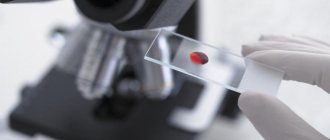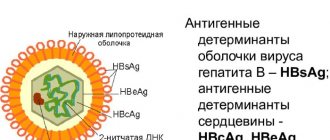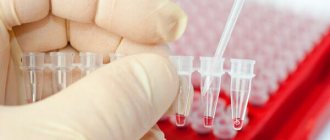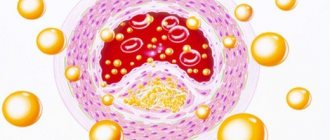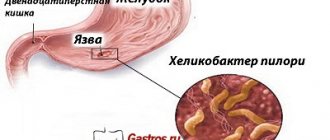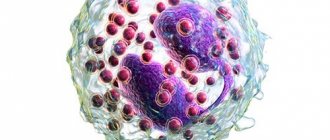Tumor marker CA 19-9 is an indicator in a laboratory study that is used to determine the presence of a malignant neoplasm that has affected the pancreas. Identification of this marker helps to diagnose the early stage of carcinoma, pancreatitis and diseases of internal organs.
A blood test for tumor markers shows the most accurate data and helps monitor the effectiveness of cancer treatment at any stage. This technique is also considered the most important criterion in diagnosing oncological processes in the large intestine if the test for cancer embryonal antigen is negative.
Functions in the body
CA 19-9 is a high-molecular glycated protein synthesized in the body of an unborn fetus and an adult by the epithelium of internal organs: prostate, stomach, liver, kidneys and others.
Also, this tumor marker can be detected in biological fluids of the human body: blood plasma, bile and others. The tumor marker is excreted from the body along with bile, which is why, if there is stagnation in the bile ducts, the level of tumor marker in the blood plasma shows elevated values.
Important information
A test for the content of the glycoprotein in question is of particular importance in the early detection of metastasis of a malignant neoplasm in the pancreas. About 7-10% of people do not have the gene that encodes this high molecular weight glycoprotein. Accordingly, the body does not have the genetic ability to synthesize the CA 19-9 antigen. Thus, even when a malignant neoplasm is diagnosed, the level of this glycoprotein is not detected in the serum.
How and under what conditions is it produced?
Tumor marker CA 19-9 is formed in the epithelium of internal organs:
- pancreas;
- bile ducts;
- prostate;
- pancreas;
- endometrium;
- salivary glands;
- digestive system.
Tumor marker CA 19-9
CA 19-9 acts as a carbohydrate antigen, a glycoprotein with a molecular weight of 1000 kDa. The tumor marker is a modified form of the Lewis blood group antigen. In patients who do not have the Lewis gene, for example, people of Caucasian nationality, the tumor marker is not isolated.
What is tumor marker ca 19-9?
The literal decoding of the abbreviation CA is cancer antigen. It was first discovered at the end of the 20th century. The antigen was found in the blood of patients with colorectal and pancreatic cancer. According to its chemical structure, ca 19-9 is a glycoprotein that is produced by malignant cells. This is a compound that is produced by the fetal intestinal epithelium during intrauterine development.
After a person is born, this tumor marker continues to be synthesized in the digestive tract, but in very small quantities. When cancer cells begin to divide uncontrollably, a large amount of the tumor marker ca 19-9 is released into the bloodstream.
However, for indigenous residents of the Caucasus, this compound is absent even at the last stage of oncology. Therefore, to diagnose cancer, people of Caucasian ethnicity should use other research methods.
Symptoms of increase
Analysis for the CA 19-9 tumor marker is prescribed to patients who exhibit typical symptoms of diseases affecting the pancreas:
- acute pain in the hypochondrium, sometimes spreading to the entire left side of the body;
- discomfort in the peritoneum;
- nausea;
- vomit;
- hiccups;
- violation of metabolic processes;
- sudden weight loss;
- loss of appetite;
- bloating;
- diarrhea;
- complaints of fatigue;
- hard to swallow;
- rare releases of gastric juice into the oral cavity;
- low hemoglobin levels (iron deficiency anemia).
What does it mean?
To understand your health status, you need to undergo various tests and examinations. One of these indicators are tumor markers. They are certain proteins that are generated and give a response to cancerous tumors. Therefore, by conducting tests, it is possible to accurately identify which organ contains malignant cells.
Important! Tumor markers are taken in several pairs at once and are combined according to indicators. To determine the stages of development of pancreatic cancer, tumor markers such as CA 19-9 and CA 125 are taken, then we will consider what they mean.
The most important thing that CA 19-9 provides is the detection of cancer in the initial stages, when it can still be defeated, so it is better to take the key test at the first symptoms and suspicion of the disease.
The value of the normal and abnormal indicator according to the window marker CA 19-9 determines the disease of cells in the pancreas. And if the value is increased, then the tumor marker CA 19-9 is a laboratory indicator that detects the presence of carcinoma in the blood in the early stages of its appearance, distinguishes between inflammatory processes in the pancreas and pathological changes in other body systems.
Analysis of CA 19-9 is very important for identifying gastrointestinal disease at the first stage, because pancreatic cancer is considered one of the most dangerous and complex types. With moderate and severe pathology, life expectancy can reach 5 years.
Reasons for the increase
Tumor marker CA 19-9 can be high with the development of the following pathologies:
- malignant formations: uterus, mammary glands, pancreas, bile ducts, bronchi, lungs, stomach, intestines, prostate, liver, kidneys and other internal organs;
- pancreatic carcinoma;
- colorectal cancer;
- pancreatitis in acute and chronic form;
- stones in the kidneys and bile ducts;
- cholecystitis;
- cystic fibrosis;
- benign formations such as adenoma, polyps, cysts;
- autoimmune diseases: lupus, sarcoidosis, rheumatoid arthritis;
- thyroid diseases.
High levels of CA 19-9 can be observed in people with impaired glucose metabolism and in people with diabetes.
Indications for the study
Tumor marker CA 19-9 shows how effective treatment is for cancer affecting the pancreas. This test is also carried out to identify early relapses in cancer, and helps to distinguish cancer from other pathologies, for example, pancreatitis. A high concentration of this protein indicates the prevalence of cancer and the presence of distant metastases.
Also, a tumor marker test is recommended for those patients who have a history of cancer in their family that has affected the organs of the digestive system.
A doctor, namely a family doctor, therapist or oncologist, can prescribe a patient to take a blood test if there is a suspicion of the following ailments:
- cancer or inflammation in the stomach and intestines;
- malignant formation of the pelvic organs;
- breast cancer in women;
- cholecystitis;
- cirrhosis of the liver;
- hepatitis;
- cystic fibrosis;
- cholelithiasis.
The CA 19-9 tumor marker shows whether it is possible to remove a tumor from a small area of the infected organ. If the indicator is over 1000 units/ml, then surgery is not performed. In this case, metastases are already observed, and the operation does not give positive results. If the indicator is below 1000 units, then the operation brings positive dynamics in 50% of patients.
Deviation from the norm
The normal level of tumor marker CA19-9 in the blood of a healthy person is from 10 to 37 IU/ml.
If the protein concentration rises to 100 IU/ml, the doctor will prescribe an additional test and repeat the test, as it may be false positive.
NOTE! Very often, patients at the first stage do not have a significant increase in this tumor marker. Therefore, it is not always possible to see the presence of a malignant tumor.
Diseases that cause an increase in the CA 19 marker
- Cystic fibrosis
- Pancreatitis
- Inflammatory bowel diseases
- Blockage of the bile ducts in the gallbladder.
- Cholangitis
- Pancreatitis
An increase to 500 IU/ml indicates a developing cancer tumor
| Cancer | Probability |
| Colorectal cancer | 67% |
| Pancreatic tumor | 100% |
| Malignant tumor of the stomach | 95% |
| Liver cancer | 85% |
| Education in the ovaries | 69% |
| Hepatocellular carcinoma | 66% |
| Gallbladder cancer | 90% |
| Cancerous growth in the rectum | 80% |
| Uterine cancer in women | 65% |
NOTE! This tumor marker often indicates pancreatic cancer and sometimes it can be detected at stage 2 or 1, when the disease does not manifest itself in any way and the tumor is still operable.
Other diseases:
| Disease | Probability percentage |
| Cholecystitis | 51% |
| Toxic hepatitis | 53% |
| Cystic fibrosis | 52% |
| Cirrhosis of the liver | 48% |
| Acute hepatitis | 55% |
| Cholelithiasis | 50% |
If the indicator reaches 1000 IU/ml, this means that the tumor is in the final stage 4 and it is urgent to determine how large the tumor is, how severely the nearby tissues and lymph nodes are affected, and whether there are metastases. If the indicator is no more than 950 ml, then there is still a chance, since it often happens that this is cancer in phase 3 and so far without metastases.
How to determine
The CA 19-9 tumor marker is checked using chemiluminescence immunoassay (CHLA). This is one of the most modern methods, which replaced the enzyme-linked immunosorbent method. The method is based on a specific reaction between antibodies and antigens of the human body.
In this case, a phosphor molecule is attached to the antibody molecule. This substance emits a specific glow, which can be easily seen under ultraviolet irradiation. The degree of luminescence is detected by a special device - a lumenometer.
The study takes place within 1-2 days, the cost is from 600 rubles.
Preparing and conducting analysis
To get the most accurate results, the patient must properly prepare:
- do not smoke half an hour before blood sampling;
- the day before the test, do not drink alcohol-containing drinks;
- You should exclude fatty and fried foods from your diet at least 3 days before the test;
- do not take medications, with the exception of vital medications, but you should inform your doctor about taking them;
- On the day of blood sampling, avoid physical activity and sports.
Blood sampling is carried out in the morning - from 7 to 11 o'clock. Blood is taken from the patient from a vein and on an empty stomach.
How is a test for tumor marker ca 19-9 carried out?
To detect the marker, venous blood is taken. The procedure requires minimal preparation. The analysis is done in the morning on an empty stomach. The last meal should be 10-12 hours before the test.
The patient should also observe some restrictions:
Article on the topic:
What is alpha fetoprotein analysis? How and when to take it?
- Quit smoking and alcohol the day before the test.
- Stop taking medications 48 hours in advance. This is necessary for the reliability of the picture, since some medications provoke an increase in indicators.
- For three days you need to follow a low-fat diet. Fatty foods provoke liver inflammation, so the results may be false positive.
- Avoid physical and emotional stress.
Impaired bile outflow also causes increased values. Therefore, in parallel with the analysis for CA 19-9, blood biochemistry is carried out. In this case, the amount of alkaline phosphatase is of particular importance. Blood is sent for testing within an hour after collection; it should be stored at a temperature no higher than 9 degrees. Analysis results are usually ready in 1-3 days, depending on the workload and equipment of the laboratory.
Decoding the results
Normally, CA 19-9 should be in the range of 0-0.35 units/ml. This level is considered normal for both women and men and does not change depending on the patient’s age. If the protein level is higher than normal, this indicates the presence of cancer in the pancreas. The higher this level, the later the stage of the disease. A protein reading that is too high indicates that there are already metastases in the body.
But don’t panic if, after receiving the test results for a tumor marker, its level is high; sometimes a high level can indicate the presence of inflammation.
If the interpretation of the analysis is in doubt, the patient is recommended to donate blood again. The fence is made in the same place and under the same conditions. To obtain more accurate data, it is additionally recommended to undergo a comprehensive examination: x-ray, MRI, ultrasound, biopsy.
If the CA 19-9 indicator in the analysis is within 100 units, then this may indicate ailments affecting the digestive organs or the initial stage of oncology. At these rates, no symptoms are observed.
With an indicator within 200 units. It is recommended to undergo additional examination, as this may indicate the presence of a cyst in the pancreas.
If the CA 19-9 indicator is within 500 units, then this may indicate benign ailments:
- cirrhosis;
- hepatitis;
- cholecystitis;
- cholelithiasis;
- cystic fibrosis.
Cystic fibrosis. Symptoms
If the tumor marker level is above 500 units, then this indicates the presence of the following types of malignancy:
- uterus, ovaries and mammary glands in women;
- pancreas;
- stomach;
- liver;
- gallbladder;
- rectum.
In some patients the indicator may be over 1000 units. This 100% indicates cancer at a late stage with metastases in nearby organs.
CA 19-9
CA 19-9 is a specific antigen produced by epithelial cells of the gastrointestinal tract.
Synonyms Russian
Carbohydrate antigen 19-9, cancer antigen CA 19-9.
English synonyms
Ca 19-9, Cancer Antigen 19-9, Carbohydrate Antigen 19-9, Gastrointestinal Cancer Antigen.
Research method
Chemiluminescent immunoassay.
Determination range: 0.6 - 10000 U/ml.
Units
U/ml (unit per milliliter).
What biomaterial can be used for research??
Venous blood.
How to properly prepare for research?
Do not smoke for 30 minutes before the test.
General information about the study
Cancer antigen CA 19-9 is a high molecular weight glycoprotein that is normally produced by epithelial cells of the gastrointestinal tract. Its level increases in almost all patients with tumors of the gastrointestinal tract, especially the pancreas. Produced by tumor cells, CA 19-9 enters the bloodstream, making it an effective tumor marker for monitoring the course of the disease.
The level of the tumor marker CA 19-9 is elevated in 70% of patients with pancreatic cancer.
Its concentration may also increase in tumors of other locations (colorectal cancer, cancer of the liver, stomach, gall bladder or bile ducts, ovaries), liver diseases (hepatitis, cirrhosis), cholelithiasis, pancreatitis, cystic fibrosis.
The CA 19-9 test is not used for the primary diagnosis of cancer, as it does not have sufficient sensitivity and specificity.
What is the research used for?
- To monitor the effectiveness of treatment for pancreatic cancer and detect relapses of the disease.
- To obtain information about the prevalence of the tumor process, the presence of distant metastases in pancreatic cancer.
- For the differential diagnosis of pancreatic cancer with other diseases such as pancreatitis.
When is the study scheduled?
- For symptoms of pancreatic cancer: abdominal pain, nausea, weight loss, jaundice.
- Periodically to monitor the effectiveness of treatment and detect relapses in patients with pancreatic cancer with initially elevated CA 19-9 levels.
- If you suspect cancer of the liver, gall bladder or bile ducts, stomach, colon (in combination with other tumor markers).
What do the results mean?
The isolated use of research for the purposes of screening and diagnosing cancer is unacceptable. The information in this section cannot be used for self-diagnosis and self-treatment. Diagnosis of any disease is based on a comprehensive examination using various methods, not just laboratory ones, and is carried out exclusively by a doctor.
Reference values: 0 - 34 U/ml.
The absence or low level of cancer antigen CA 19-9 in the blood is typical for healthy people.
Excessive levels of the tumor marker CA 19-9 in the blood most often indicate pancreatic cancer. Typically, the higher a patient's CA 19-9 level, the more advanced the disease they are. A very high concentration of CA 19-9 is observed in the case of metastatic pancreatic cancer.
In addition, a high CA 19-9 level may indicate various diseases: colorectal cancer, cancer of the liver, stomach, gall bladder or biliary tract, ovaries, liver disease (hepatitis, cirrhosis), cholelithiasis, pancreatitis, cystic fibrosis.
However, a normal CA 19-9 concentration does not exclude the presence of pancreatic cancer. This happens at the initial stage of the tumor process, when the level of CA 19-9 has not yet increased.
Periodic measurements of CA 19-9 may be useful during and after treatment for pancreatic cancer. Based on the increase or decrease in its level, the effectiveness of the treatment can be assessed or tumor relapses can be detected.
The absence or reduced content of cancer antigens CA 19-9 in the blood means:
- the norm
- the success of the treatment,
- early stage of pancreatic cancer, when the level of tumor markers has not had time to increase.
An increased level of cancer antigens CA 19-9 in the blood means:
- pancreas cancer,
- tumor of other localizations (colorectal cancer, cancer of the liver, stomach, gallbladder or biliary tract, ovaries),
- liver diseases (hepatitis, cirrhosis),
- cholelithiasis,
- pancreatitis,
- cystic fibrosis.
Important Notes
- The tumor marker CA 19-9 is of great importance for the early detection of pancreatic tumor metastases.
- 7-10% of people do not have the gene encoding the CA 19-9 antigen. Accordingly, they genetically lack the ability to synthesize CA 19-9, therefore, even with a malignant tumor, the level of the tumor marker in the blood serum is not determined.
- The diagnostic value of an analysis for cancer antigen CA 19-9 in the blood increases with a simultaneous test for CEA (carcinoembryonic antigen).
Also recommended
- Carcinoembryonic antigen (CEA)
- CA 242
- CA 72-4
- Total bilirubin
Who orders the study?
Oncologist, surgeon, hepatologist, therapist.
When to see a doctor
In case of any ailments, you should visit your family doctor, who will help you find the cause of your poor health. If there are suspicions of serious disorders of the digestive system, then the family doctor may prescribe a consultation with a gastroenterologist.
Often, a gastroenterologist recommends undergoing a full examination, including a blood test for the CA 19-9 tumor marker. If the indicator is higher than normal, even if it is slightly exceeded, a consultation with an oncologist and a full examination will be required.
Peculiarities
This marker is quite informative for already diagnosed pathology. This way the doctor can see whether the treatment is proceeding correctly, how the tumor itself reacts and how quickly it grows. Unfortunately, some part of the population does not have the so-called “Lewis” protein in their blood (most often it is not found in people of Caucasian nationality) and therefore this marker is not detected even in the last stages of cancer.
The marker itself, as already mentioned, is secreted by several organs of the gastrointestinal tract. Typically, multiple tests are performed to make a more accurate test. Since very often there are both false positive and false negative results.
Usually, after the second test, the doctor looks at the dynamics of the balance and content of CA 19-9 in the blood, and if it becomes more, then there is an alarming sign. For a more accurate study, other types of diagnostics of the gastrointestinal tract are used. A more effective and sensitive marker for these organs is CEA or carcinoembryonic antigen.
NOTE! For Caucasians and for those without Lewis protein, there is another tumor marker, CA 50, or you can use the CEA test. It is better to ask your doctor or laboratory technician about Lewis blood groups.
How to get it back to normal
The tumor marker CA 19-9 shows an excess of the norm, which means it is necessary to undergo a comprehensive examination, including instrumental and biochemical examination. The examination should be constantly monitored by an oncologist or gastroenterologist. If an inflammatory process in the digestive system is detected, the patient remains under the control of a gastroenterologist and undergoes a course of treatment selected for him individually.
If a malignant tumor is detected, the patient is observed by an oncologist, who determines further treatment tactics.
Medications
If the cause of a high level of tumor marker is inflammation of the pancreas, then the doctor may recommend taking the following medications:
- antispasmodics;
- N-2 blockers;
- antacids;
- enzyme preparations.
A gastroenterologist may prescribe the following medications to patients with pancreatic diseases:
- Pancreatin. Available in the form of tablets or dragees, it is created based on the pancreas of cows and pigs. The drug helps normalize digestion and contains amylase and protease. These enzymes promote better digestion of proteins, carbohydrates and fats. The drug is prescribed for cholecystitis, pancreatitis, and gastritis. The drug is taken with meals, the dosage is calculated individually, the standard dose is 2-4 tablets per day, the duration of therapy is 14 days. Packaging the drug will cost an average of 60 rubles.
- Panzinorm. This is a combination medicine that helps in the treatment of pancreas. Available in the form of capsules and tablets. The composition includes 3 enzymes that normalize digestion. The medicine improves the body's absorption of nutrients and helps produce bile. The drug is indicated in preparation for examinations of the digestive system, to relieve pain. Take the drug 1-2 capsules up to 3 times a day, the course is individual. The average cost of a package of medicine is from 230 rubles.
- Creon. This is an enzyme preparation recommended for the treatment of chronic pancreatitis and cystic fibrosis. The enzymes included in the composition help to better digest food and completely absorb it. Available in the form of capsules with different amounts of enzymes: 10,000, 25,000 and 40,000. The drug is not recommended for pancreatitis. Take with food, the dose and course are individual for each patient. The drug will cost an average of 300 rubles.
Traditional methods
In the treatment of pancreatic pathologies, traditional methods are often used:
- Oat milk. Oatmeal is one of the most important products recommended for daily consumption by people who have problems with pancreatic functions. Oat milk has shown good results in the treatment of pancreatic ailments. Prepare it like this: ½ tbsp. unpeeled whole oats, rinse well under running water. Then pour 600 ml. water and simmer over low heat for at least 40 minutes. Then, without removing from the stove or turning off, crush the oats with a masher, stir and cook for another 20 minutes. Strain and drink the whitish liquid ½ tbsp. 3 times a day. The course is at least 1 month. Oat milk can be stored in the refrigerator for no more than 2 days.
- Potato juice. People with pancreatic problems are recommended to drink 1 tbsp. freshly squeezed potato juice 2 times a day. The course is at least 2 weeks. If you don’t like the taste of the juice, you can mix it with half a portion of kefir or carrot juice. After drinking the juice, it is better to lie down for a while.
- Lemons. You will need to take 1 kg of lemons and pass them together with the peel through a meat grinder. Also grind 300 g of fresh parsley and cloves of garlic. Mix everything and store in an enamel container in the refrigerator. Take 1 tsp. mixture 3 times a day. To achieve maximum effect, it is better to drink the mixture with a special infusion made from lingonberry leaves, blueberries, green beans and corn silk. Take the components in equal parts, pour boiling water and leave for 2 hours in a thermos. Drink ¼ tbsp. The course of treatment is at least 1 month.
- Golden mustache. This plant has long been used in the treatment of pancreatitis. To prepare a healthy decoction, you need to take 1 long and 2 short leaves of the plant. Grind and pour 600 ml. hot water. Simmer in a water bath for 1.5 hours. Remove from the stove and wrap, leave for 5-6 hours. Take the decoction warm, no more than ¼ tbsp. 3 times a day 30 minutes before meals. The duration of treatment is at least 14 days.
- Parsley. It helps to effectively cope with the symptoms of pancreatitis. You need to take 1 kg of fresh parsley, rinse under running water, and then pour over boiling water. Place the plant in a saucepan and pour in milk until all the branches are covered. Place the pan in the preheated oven. The milk should boil and completely melt. Grind the resulting mass through a colander. Drink the resulting medicine in equal portions throughout the day. This drug helps improve the functioning of the pancreas, kidneys and bladder. The course of treatment is at least 2 weeks.
Other methods
If the tumor marker CA 19-9 is high, then this may be evidence of the development of pancreatic cancer. And the main method of its treatment is surgery, which involves removing the tumor. If surgery is combined with radiation and chemotherapy, the prognosis can be favorable.
Surgical therapy can be radical or palliative. The first method involves removing the root cause of the neoplasm and part of the organ affected by the disease and nearby tissues. The palliative technique is used in patients with inoperable tumors. It helps alleviate the patient's condition.
After surgery, the oncologist recommends chemotherapy, especially for patients with inoperable tumors. Chemotherapy helps suppress the growth and division of cancer cells.
Radiation therapy is also recommended, which helps reduce the size of the tumor by exposing it to x-rays.
It is very important to adhere to proper nutrition in case of diseases and pancreatic cancer. First of all, the patient must completely eliminate sweets, the only exception being honey. You should also completely stop smoking and drinking alcohol. There will be no benefit from eating fatty, spicy and fried foods.
You must include in your diet:
- buckwheat and oatmeal;
- fermented milk products;
- light soups;
- lean meat;
- unsweetened fruits.
You need to drink as much purified still water as possible.
Possible complications
Today medicine has come a long way, but cancer pathologies cannot always be treated. Malignant tumors of the pancreas are considered the most dangerous and severe. It is quite difficult to quickly and correctly diagnose, since cancer symptoms are often confused with other inflammatory ailments.
In most patients, the diagnosis can be made when metastases have already appeared. Detection of the disease in late stages does not give the desired result in treatment, and most patients die within 2 years. That is why at the first alarming symptoms it is better to seek help.
CA 19-9 is an important tumor marker in the human body, the increase of which indicates that the body has experienced serious disruptions in the functioning of the digestive system. A deviation from the normal protein level may indicate the presence of a malignant or benign formation, so you should not refuse to take the test.
